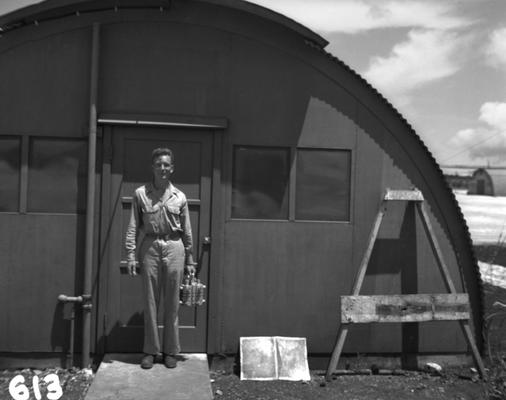Lawrence H. Johnston was an American physicist.
After receiving his bachelor’s degree in physics from the University of California, Berkeley in 1940, Johnston followed his mentor Luis Alvarez to MIT. He worked in the MIT Radiation Lab, where he and Alvarez developed the ground controlled radar approach to facilitate plane landings in adverse weather conditions.
In 1944, he joined the Manhattan Project in Los Alamos and played a key role in the development of the exploding bridgewire detonation method. This innovation made possible the development of implosion-type atomic bombs, like the Fat Man bomb dropped on Nagasaki.
He later worked as a part of Project Alberta, the team that transported and assembled the two atom bombs to Tinian Island. He witnessed the Trinity test and was the instrument officer on The Great Artiste during both the Hiroshima and Nagasaki missions, measuring the bombs’ blast effects. He was the only person to witness all three nuclear explosions.
After the war, Johnston returned to school to receive his Ph.D. from the University of California, Berkeley in 1950. He spent much of the rest of his life teaching physics at the University of Idaho, Moscow.





